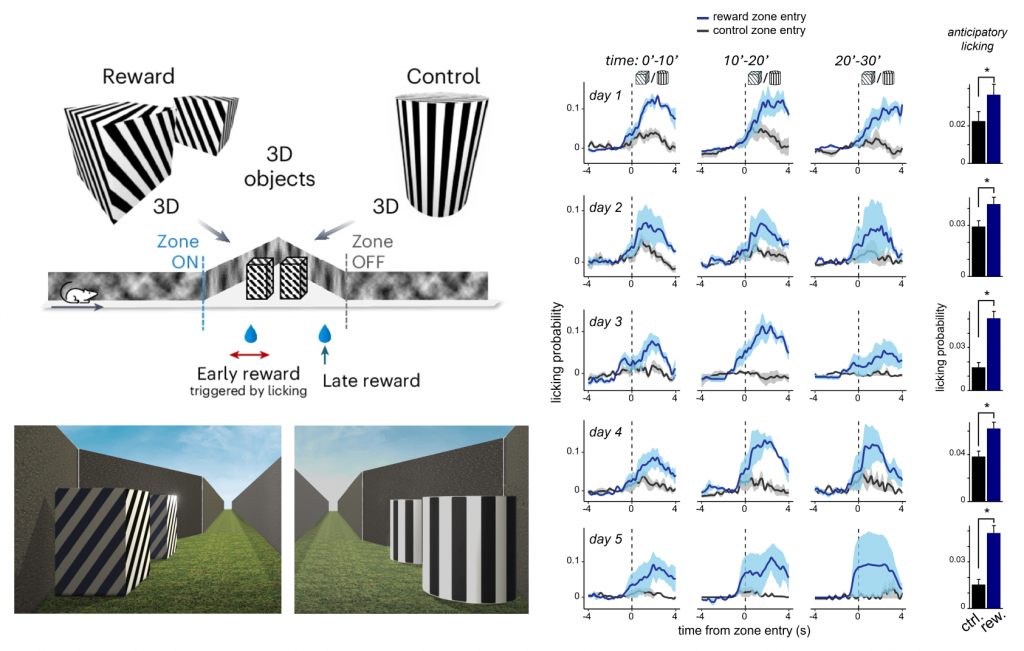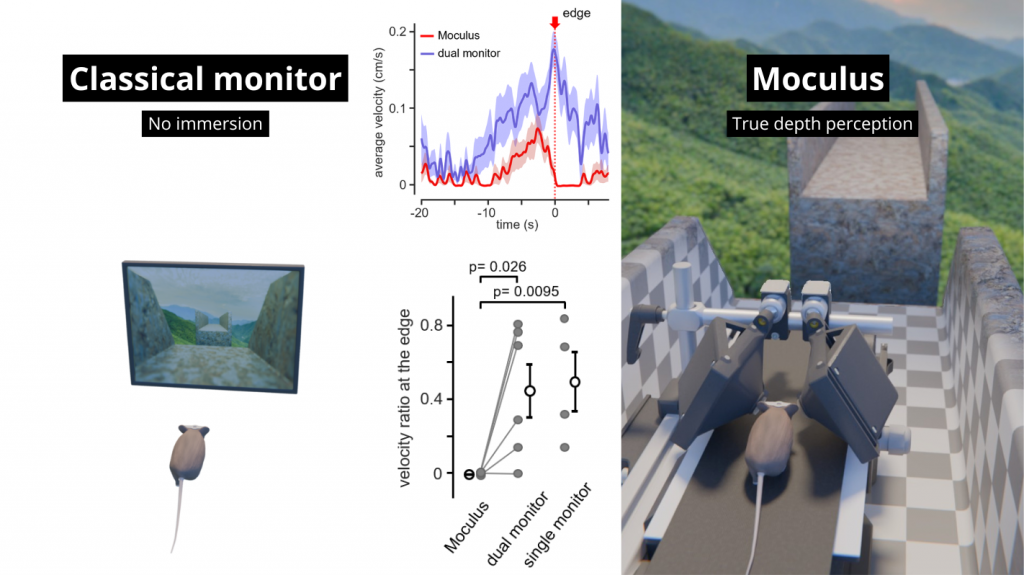MOUSE VIRTUAL REALITY SYSTEM – VR
Unlock Unprecedented Research Capabilities
Read and download the full article about Moculus HERE

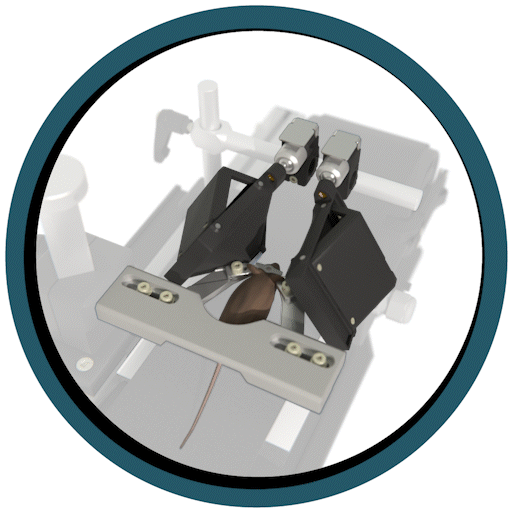
Featured highlights:
- Full immersion
- Enables rapid visual learning
- Ready-to-use setup right out of the box
- Highly customizable virtual environment
- Up to 300x faster learning speed compared to 2D monitor systems
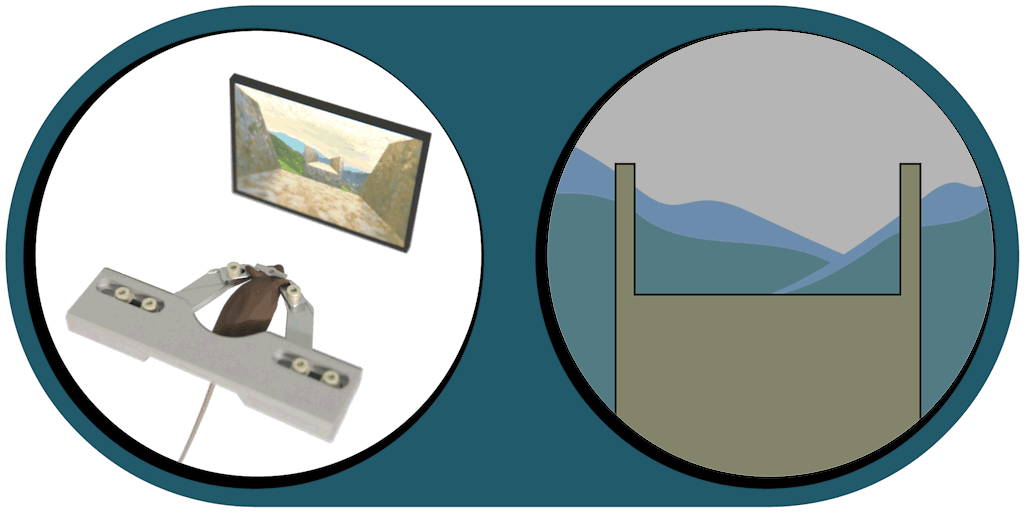
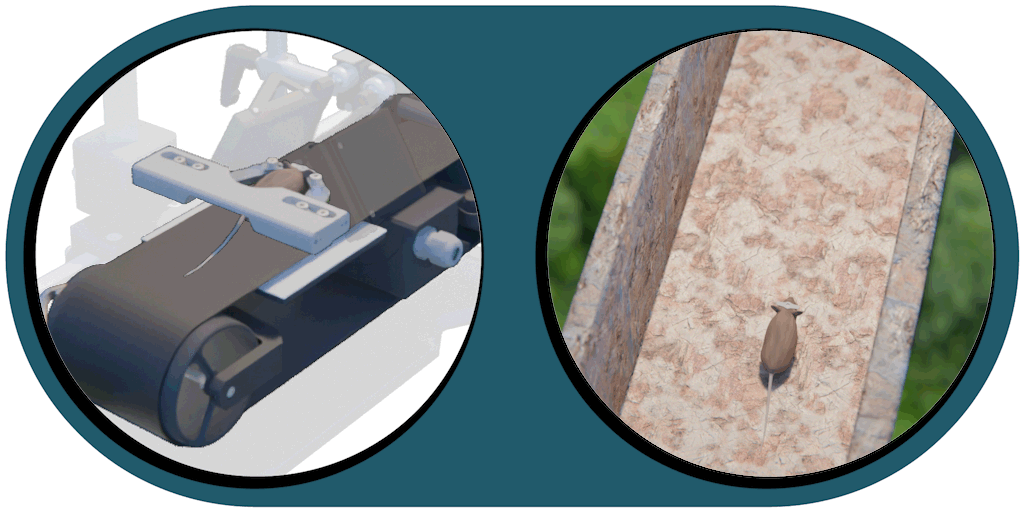
Great projection accuracy in the binocular zone
enabling true stereo vision
Enables investigating innate behaviors without
training (e.g. abyss test, looming disk stimulus)
Key specifications:
- Binocular vision
- Behavior feedback contributing to sense of presence
- Natural reaction to the virtual environment without preconditioning
- Modular & Scalable – Seamlessly integrate with two-photon imaging and electrophysiology setups
- Creating realistic virtual environments and behavioral protocols that emulate the animal’s natural world, using a state-of-the-art engine
Click on a category to explore:
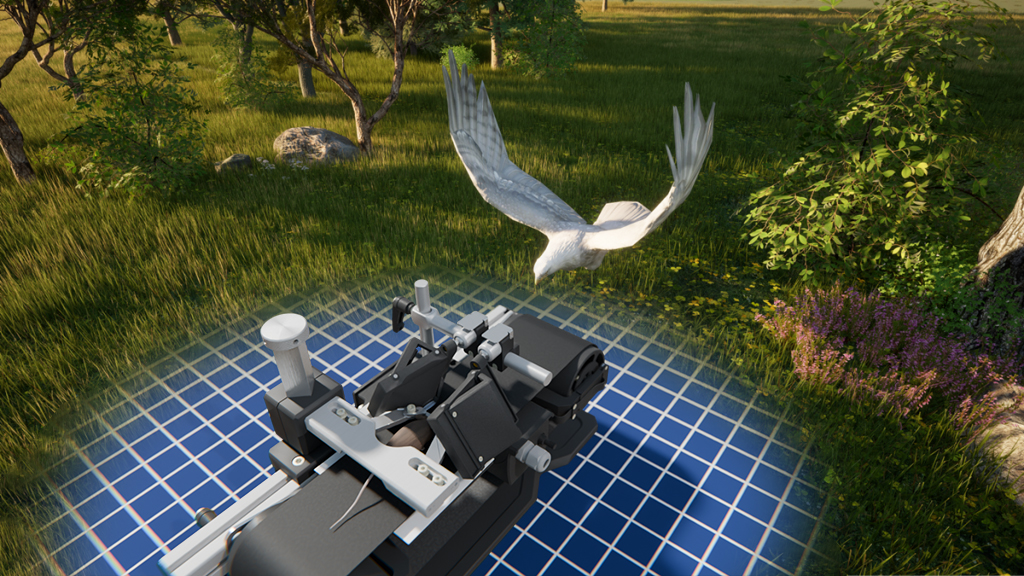
Flexible Experiment Design – Create fine-tuned virtual environments
for complex studies
Fast visual discrimination learning by covering
large area of the field of view
Innate depth aversion is immediately achieved with Moculus without any prior training
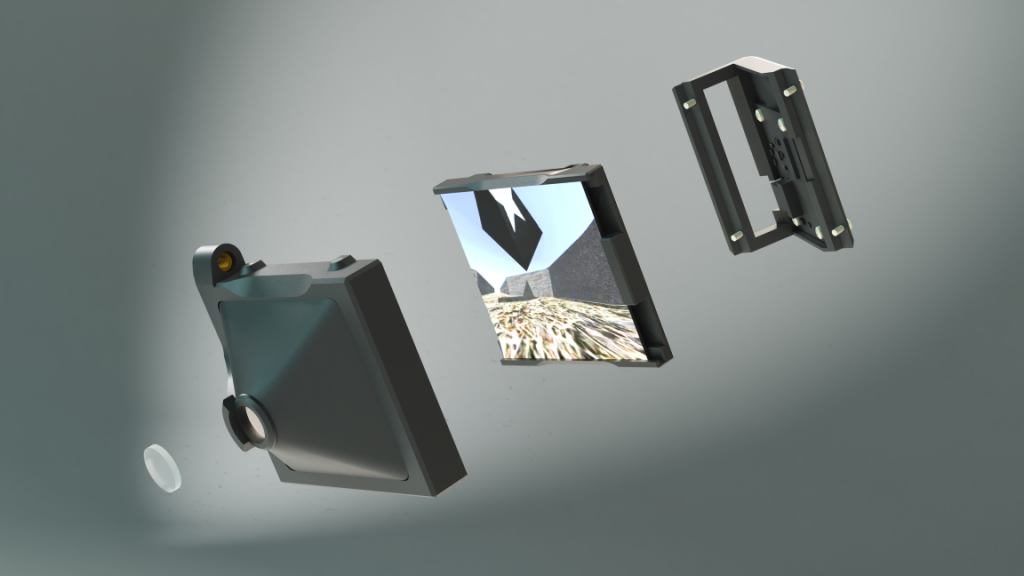

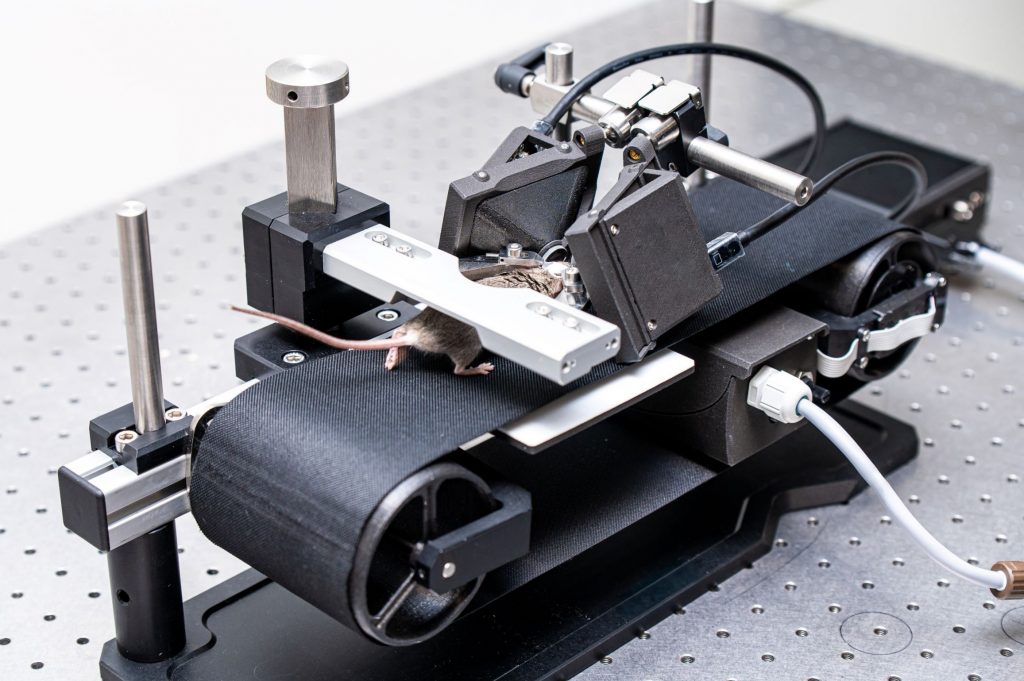
“Sense of presence” – when animals perceive VR as reality
Facilitating high-resolution insights
Natural and unbiased behavior under precise head-fixed conditions
Virtual Reality Kit
Our patented comprehensive head-aligned VR display for mice provides binocular depth perception and stereoscopic 3D vision. By positioning the displays to the eyes of a head-fixed mouse running on a treadmill, virtual scenes can be displayed to the mouse in closed-loop experiments, where the treadmill motion controls the visual scene. This makes it possible to reproduce real, freely moving behavior tasks, whilst the high-resolution, large FOV or even 3D random-access microscope records the brain states on the cellular or subcellular level. The photorealistic rendering engine creates perspective corrected 3D virtual world and stereoscopic binocular vision in a large FOV, allowing full immersion in any imaginable environment.
The biggest added value of Virtual Reality is the sense of presence, when the experimental animal perceives the widely controllable and reproducible virtual environment around it as reality itself.
- Behavior feedback contributing to presence
- Binocular vision with depth perception, full immersion
- Natural reaction to the virtual environment without preconditioning
- Modular and scalable design for two-photon imaging and electrophysiology
- Covers most of the field-of-view without static visual cues in the FOV which might disturb presence
- Photorealistic rendering with a state-of-the-art engine to flexibly design your own virtual environments and behavioral protocols
Technology Overview
To better understand brain functions during natural behavior, experiments that mimic the real world as closely as possible are essential. High-resolution imaging requires head fixation to the microscope, enabling subcellular imaging of thousands of cells with advanced 3D scanning and photostimulation, unlike free-running animal studies with limited FOV and resolution. Neuronal activity of cells can be followed for months in accordance with behavioral experiments. Virtual-reality (VR), in combination with head-fixed recordings, provides control and stability for recordings during behavioral experiments enabling the creation of complex interactive virtual environments, allowing every aspect of the visual input of the experimental subject to be controlled. The Mouse Virtual Reality system provides the animal with a close to real life sensation, thereby achieving faster learning and evoking non-trained, lifelike innate behavioral reactions. While habituation is still required to both the treadmill and the Moculus displays, innate behaviors (e.g. escape behavior from a looming stimuli) can be investigated without any previous training. Also, while fast learning was achieved with non-naïve, pretrained mice, the ability to investigate learning processes within the same day opens new possibilities in exploring the neuronal mechanisms of memory formation and visual processing related network changes.
While habituation is still required to both the treadmill and the Moculus displays, innate behaviors (e.g. escape behavior from a looming stimuli) can be investigated without any previous training. Also, while fast learning was achieved with non-naïve, pretrained mice, the ability to investigate learning processes within the same day opens new possibilities in exploring the neuronal mechanisms of memory formation and visual processing related network changes.
Developed by BrainVisionCenter Nonprofit Ltd. Research Institute and Competence Centre
Manufactured by Femtonics Ltd.
